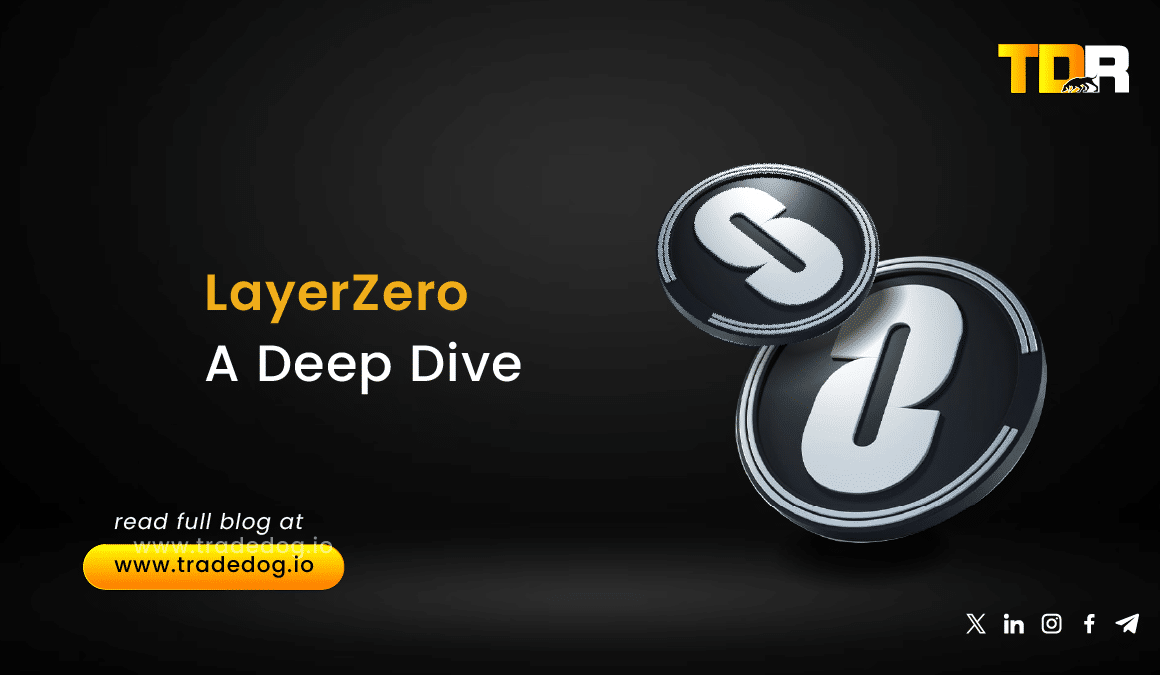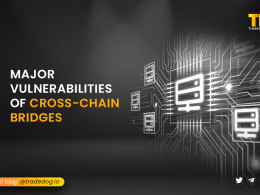Quick Links
The blockchain space is characterized by high fragmentation, with digital networks running independently of one another. While each blockchain adds more value, their inherent insularity limits the potential for cross-chain communication and sharing of resources. This has led to issues in terms of liquidity, security vulnerabilities, and inefficiencies. Traditional solutions, such as blockchain bridges and light nodes, have their own shortcomings to warrant high costs and security risks. LayerZero has emerged as a solution that has the potential to solve all these challenges by providing an interoperability protocol that is robust, efficient, and secure.
What is LayerZero?
LayerZero is an omnichain interoperability protocol designed to enable seamless communication and transactions between different blockchains. Developed by LayerZero Labs and launched in 2021, the protocol has quickly gained traction and support from major industry players. LayerZero’s architecture leverages Ultra-Light Nodes (ULNs), decentralized oracles, and relayers to validate and transfer cross-chain messages securely and efficiently.
Key Features of LayerZero
- Improved Security: LayerZero’s design prioritizes security. The use of decentralized oracles and relayers, coupled with the ULN architecture, minimizes potential attack vectors. The protocol’s reliance on independent entities for transaction validation further bolsters its security framework.
- Universal Data Exchange: LayerZero enables the development of applications that can operate across multiple blockchains without altering their original code. This feature simplifies the creation of cross-chain dApps and enhances the interoperability of existing applications.
- Scalability: The protocol’s lightweight architecture and modular design allow it to scale efficiently. Developers can extend LayerZero’s functionality through specialized modules called Libraries, enabling blockchain-specific customizations without modifying the core protocol.
- User-Friendly Experience: LayerZero simplifies cross-chain operations, eliminating the need for token wrapping and unwrapping typically associated with traditional bridges. Users can perform transactions across chains as seamlessly as they would on a single chain.
How LayerZero Works
As depicted by the above image, LayerZero primarily establishes endpoints on both communicating networks, in this case, Chain A and Chain B. Now, to send a message to Chain B, the User Application from Chain A would choose a preferred oracle, say Chainlink DON, and a relayer to handle the cross-chain message. The endpoint at Chain A feeds info to the Chainlink DON and the selected relayer about the details of the message. It relays the details of this message to Chain B while the relayer submits proof of the transaction to the target chain. The communication between oracles and the target chain takes the form as and when oracles feed blockchain protocols with data from the external environment.
Endpoints
LayerZero’s endpoints are smart contracts deployed on each supported blockchain. These endpoints facilitate message sending, receiving, and verification. Each blockchain in the LayerZero network must deploy its own endpoint, which then connects directly with other endpoints, forming a fully integrated mesh network.
Ultra-Light Nodes
ULNs are central to LayerZero’s functionality. Unlike traditional light nodes that require extensive on-chain data storage, ULNs validate transactions without storing all transaction data on-chain. This approach significantly reduces costs and enhances efficiency.
Oracle and Relayer
LayerZero employs decentralized oracles and relayers to ensure secure and accurate cross-chain communication. Oracles fetch transaction data from the source chain, while relayers independently verify transaction proofs. The transaction is executed only when both entities agree on its validity, minimizing the risk of fraud and ensuring trustless interactions.
Use Cases of LayerZero
Omnichain Fungible Tokens (OFTs) and Non-Fungible Tokens (ONFTs)
LayerZero supports the creation and transfer of omnichain tokens. These tokens can be minted, burned, and transferred across different blockchains, enabling true cross-chain asset functionality. This capability extends to both fungible tokens (OFTs) and non-fungible tokens (ONFTs).
Implementation of a Universal Light Client
Traditional cross-chain protocols like Cosmos and Polkadot support chains with similar consensus algorithms and have high operational costs. LayerZero, using oracles and relayers to send block headers and transaction proofs, offers an affordable and universal cross-chain protocol with messaging reliability similar to a light client.
Modularity
LayerZero allows applications to choose their messaging protocol (oracle/relayer) and the number of block confirmations for security. This flexibility enables developers to customize their applications, enhancing security and utility. Although currently, there is one relayer operated by LayerZero Labs, the upcoming Essence SDK will allow anyone to build their relayers and oracles, providing greater flexibility for developers.
Cross-Chain Features
Decentralized applications (dApps) spread across multiple chains can utilize LayerZero for cross-chain governance. This includes voting and implementing proposals and streamlining governance processes for multi-chain dApps.
LayerZero also facilitates efficient and low-cost cross-chain token swaps. This functionality is already being utilized by major decentralized exchanges (DEXs) like Uniswap and SushiSwap. Additionally, LayerZero enables seamless cross-chain borrowing, allowing users to deposit collateral on one chain and receive funds on another.
LayerZero’s bridging technology eliminates the need for token wrapping, simplifying the asset transfer process across blockchains. This feature reduces operational complexities and enhances user experience.
Benefits of LayerZero
Enhanced Interoperability
LayerZero’s ability to connect diverse blockchains paves the way for more integrated and cohesive decentralized applications. This interoperability unlocks new possibilities for resource sharing, liquidity pooling, and collaborative projects.
Cost Efficiency
The use of ULNs and decentralized entities reduces the costs associated with cross-chain transactions. This efficiency makes LayerZero a cost-effective solution for developers and users alike.
Flexibility and Scalability
LayerZero’s modular design allows it to adapt to the needs of different blockchains, supporting both EVM-compatible and non-EVM chains. Its scalable architecture ensures that it can handle increasing transaction volumes as the network grows.
Limitations of LayerZero
Early Stage Development
LayerZero is still relatively new and has not yet achieved widespread adoption. As with any nascent technology, there is a risk of bugs and vulnerabilities that could emerge over time.
Security and Decentralization
LayerZero relies on Chainlink oracles and a single relayer, making it vulnerable to potential manipulation and griefing attacks. Unlike Cosmos, which uses validator signatures, LayerZero’s current setup is not entirely trustless. Applications can vary in security standards, potentially leading to vulnerabilities and inconsistent security levels. Decentralizing relayers is essential to address these issues.
Costs
LayerZero’s messaging protocol, which uses Merkle tree proofs, consumes more gas than other cross-chain protocols, making transactions more expensive. For example, transferring ERC20 or OFT from Arbitrum to Polygon via LayerZero requires significantly more gas than Multichain and other protocols.
Competition
The interoperability space is crowded, with established players like Polkadot and Cosmos offering their own solutions. LayerZero faces the challenge of differentiating itself and gaining traction in a competitive market.
Conclusion
LayerZero differentiates itself from other cross-chain protocols by adopting IBC’s light client method, reducing reliance on trust entities, and offering high flexibility to builders. Rather than completely resolving existing cross-chain protocol issues, LayerZero strikes a balance between security and efficiency. It operates between bridges with external validators and light clients that periodically fetch block headers for cross-chain messaging. Key future developments to watch include its transition to a PoA network involving off-chain entities, open-sourcing these entities, lowering barriers to relayer implementation, and diversifying structures to address existing issues.







